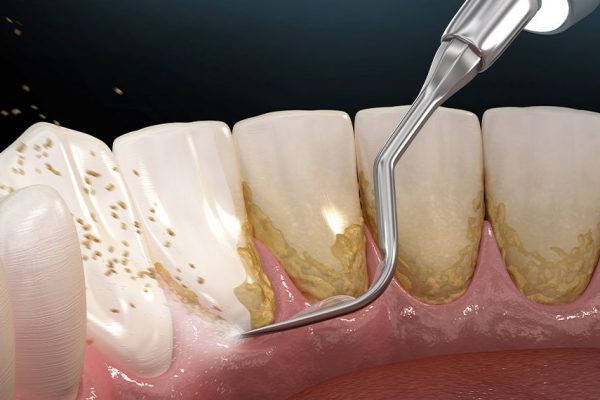Scaling and Root Planing

Scaling and Root Planning
Teeth scaling/Deep scaling and root planning helps to treat chronic periodontal disease (otherwise known as gum disease). This is a procedure done concentrating more on the deep pockets than a typical teeth cleaning.
Scaling and root planing is recommended when you have more advanced signs of gum disease (bad breath, heavy tartar buildup and unhealthy pocket depths of 4mm or more).
This procedure often takes more than one dental visit and could require a local anesthetic based on the severity of your case.
Process
Scaling and root planing is done with the use of ultrasonic scalers and hand instruments.
- Dental radiographs will be taken and pockets will be measured.
- Local anesthetic will be placed on the area that will be treated, usually this is done by quadrant.
- Ultrasonic scalers are used to remove calcular deposits from the crowns and roots of teeth.
- Hand instruments called scalers and curettes are then used to remove any remaining deposits in the deeper pockets and to make sure the tooth surfaces are clean and smooth.
- Recall after 1-2 weeks will be done and pockets are measured again.
What to expect after scaling and root planing
After scaling, you may experience pain for a day or two and teeth sensitivity for up to a week. Your gums may also be swollen and bleed.
To prevent infection, control pain or help you heal,prescribed rinse and toothpaste may be given. Medication can also be placed directly into the pocket that was cleaned.
Pockets will be assessed, and maintained through cleaning. Good dental care at home is essential to help keep gum disease from becoming more serious or recurring.
- GENERAL DENTISTRY
- COSMETIC DENTISTRY
- ORTHODONTICS
- ORAL SURGERY
- PEDIATRIC DENTISTRY
- PROSTHODONTICS
- ENDODONTICS
- PERIODONTICS
- DIGITAL X-RAYS



